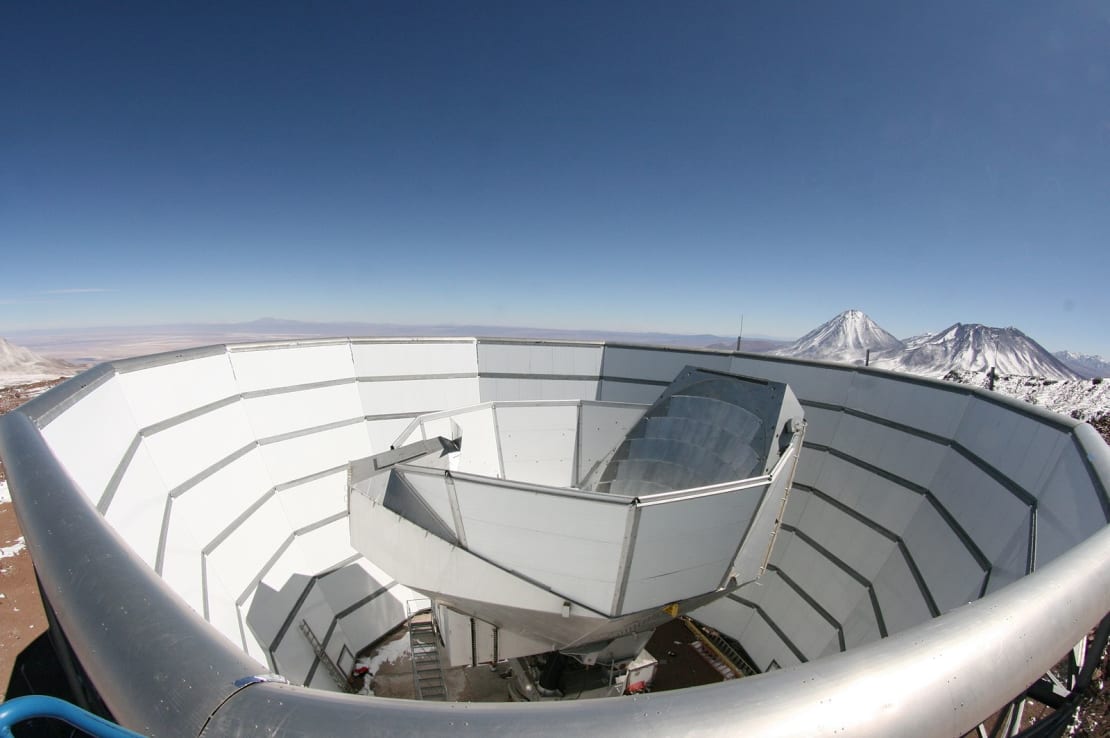Blazars are active galactic nuclei (AGN)—supermassive black holes at the centers of galaxies—that shoot out powerful jets of particles and light directed at Earth, making them some of the brightest objects in the universe. Because blazars can accelerate particles to extremely high energies, they are an attractive candidate as sources for high-energy neutrinos, the subject of study for the IceCube Neutrino Observatory at the South Pole. Among them, the blazar TXS 0506+05 was the first object to provide evidence for astrophysical neutrino emission from a blazar.
With the base of the jet being optically thick, it can block the transmission of high-energy gamma rays, which have been found coincident with high-energy neutrino emission. However, millimeter (mm) wavelength emission can still escape the environment, serving as a tracer of high-energy particle acceleration.

The IceCube Collaboration searched for a potential correlation between high-energy neutrinos and shorter-wavelength mm blazar activity using data from the Atacama Cosmology Telescope (ACT), a cosmic microwave background telescope situated in the Atacama Desert of northern Chile. The results, in a study submitted to The Astrophysical Journal, showed no correlation between mm-wavelength data and neutrino emission.

“The idea is that if the stuff going on in the jet that makes them brighter at lower energies—at the mm wavelengths observed by ACT—also causes nuclear reactions that produce lots of high energy radiation, then we should see neutrinos coming from those nuclear reactions,” explains Adam Hincks, an assistant professor at the University of Toronto and a member of the ACT collaboration. “Other studies had looked for correlations between neutrinos and galaxy jets, but in our study we looked across about 200 galaxy jets and specifically at the times when they were active with mm radiation. This made our study a much more targeted probe of the effect we were searching for.”



“Several of these blazars exhibit strong flares in their light curves, which may signal energetic activity in their jets,” says Xiaoyi Ma, who began working on mm observations of AGN as an undergraduate researcher in Hincks’s group and is now a PhD student at Peking University. “To explore potential connections, a statistical method was developed to search for time-dependent associations between these mm flares and neutrino events.”
The work used 12 years of IceCube data and light curve data from ACT. Using the light curves, researchers tested three hypotheses, including a search for neutrinos that came primarily from flaring periods of the jet and another search that looked at individual objects that were potential neutrino sources. Researchers also searched for a signal from a composite population of sources that were relatively dim.
“The study allowed us to constrain the contribution of such sources to the astrophysical diffuse neutrino flux,” says Alina Kochocki, a PhD student at Michigan State University, IceCube collaborator, and study co-lead. “By using simulations, we were also able to limit the contribution of all such similar objects within the universe.”
When they looked at individual sources, the most significant was the blazar TXS 0506+056, which is already known to be associated with time-dependent neutrino emission. However, the study did not favor any new activity or, rather, activity specifically correlated with millimeter-wavelength emission.
“As mm wavelength emission is a fairly general and robust tracer of jet activity, it is also possible that blazar jets do not play a significant role in producing the bulk of the diffuse flux,” says Kochocki. “In the future, multimessenger studies of jetted active galactic nuclei will be required to better reveal the connection between radio, mm, gamma-ray, and neutrino variable emission.”
Even though ACT was decommissioned in 2022, the Simons Observatory, a bigger, more sensitive suite of telescopes that also observes the millimeter sky, has begun initial observations and will continue observing through 2034. With the ability to monitor even more galaxy jets, the SO observations will pave the way for more sensitive studies in future partnerships with IceCube.
+ info “A Search for Millimeter-Bright Blazars as Astrophysical Neutrino Sources,” IceCube Collaboration: R. Abbasi et al. Submitted to The Astrophysical Journal. arxiv.org/abs/2507.03989